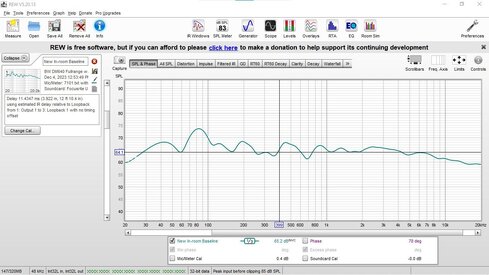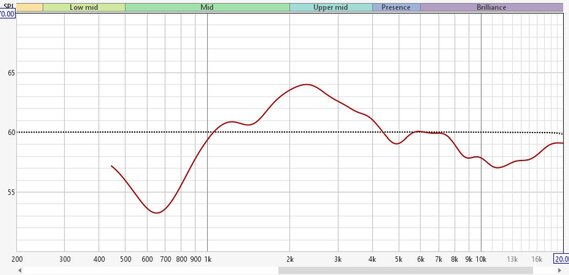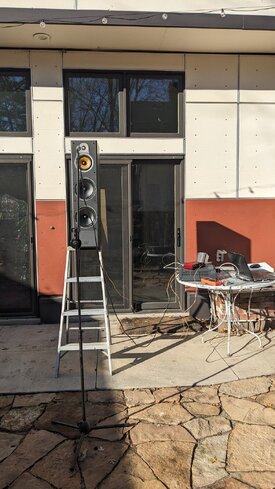The new USB interface works! - I've run a few measurements in REW of the current in-room response as an updated baseline. It still looks rough with lots of reflections, but is more even than what I got from the old interface. I did get some funny messages about clipping in the reference channel (lowered the output level and that helped) also, I have not figured out whether to use acoustic timing reference or use the loopback feature since this is a 2-channel interface (Is loopback a more consistent or better choice for timing reference - instead of using a 2nd speaker off of ch 2?) I need to use phantom power for the mic, doesn't that mess with the loopback input? I read somewhere that the Scarlett 2i2-4g has the capability to do "Internal" loopback. More research needed...
in the next few days I'll try to move the setup to a larger space and also maybe try an outside measurement in the backyard since temps are expected to climb to the low 40's!
Here are a screenshot and REW file of the new baseline measurement for reference.
Sixto.
in the next few days I'll try to move the setup to a larger space and also maybe try an outside measurement in the backyard since temps are expected to climb to the low 40's!
Here are a screenshot and REW file of the new baseline measurement for reference.
Sixto.

















